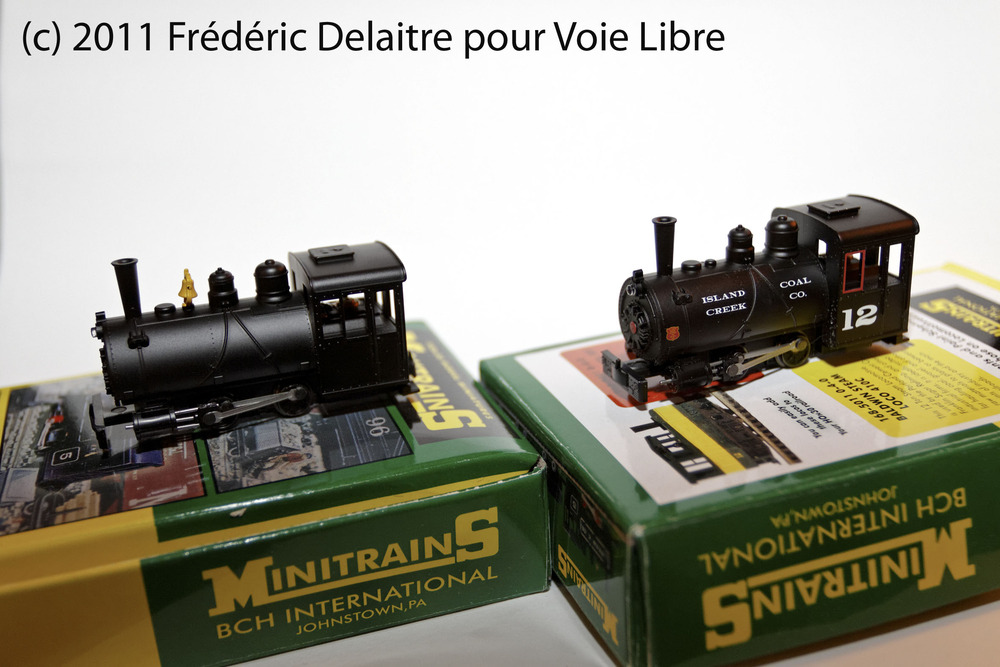Ever since the late 1700s Arizona was known to have rich copper deposits. In the late 1870s was when the first narrow gauge rail lines were constructed to help serve copper mines and transport copper ore to the smelter. Clifton, AZ will be the location I shall use as an example. What eventually became the Arizona Copper Co. constructed a narrow gauge railway up Chase Creek Canyon to serve the many mines along the right-of-way. The gauge was an unusual 20" between the rails and is commonly referred to as "babay gauge". Baby gauge, by deffinition, is a track gauge under or less than 24 inches. Which is considered to be the smallest practical gauge for railroad track. However there were track gauges of 18 inches, which was popular for mine shafts across the US. There is much speculation as to why a gauge of 20 inches was used and the true answer may never be known. Either way, this created a very unique system that operated in southeastern Arizona.
The Arizona Copper Co. (or "ACC") didn't receive their first locomotive until 1880, which was a small 0-4-0T built by Porter and given the name "Coronada". And later renamed by its engineer to "Emma", after the engineer's daughter.
The Detroit Copper Co. used 0-4-0s saddle tankers also built by H.K. Porter. These diminutive narrow gauge trains wound their way through the harsh desert canyons of southeast AZ to serve the many mines and inclines along their right of way.
In 1903 the 20" gauge line leading up Chase Creek Canyon was widened to 3ft gauge. The small 0-4-4 Porters, aside from numbers 9 and 10, (one of the two shown above) were shortened, having their rear trucks removed and then hauled these locomotives to the top of the inclines to better serve the mines.
Sadly today, nearly all of what was left of the ACC and the DCC 20" gauge lines have been completely eradicated by open pit copper mining. However there are a few bits of grade left in the Clifton Area.
Although not much is left, there is still a reasonable amount of documentation and some of the ACC's locomotives are preserved, as wells as one of the DCC's 0-4-0 Porters. And this has provided me a great deal of inspiration form my modeling endeavors.
Next, Inspiration.
I am predominantly an On30 modeler and have an On30 layout in planning, the Big Thunder & Western. Not to be confused with Dave's (http://www.blogger.com/profile/06955737281413114162) BT&W, which sadly never came to fruition. However his Thunder Mesa Mining Co. is also a fantastic source of inspiration to my own modeling efforts.
http://thundermesaminingco.blogspot.com/
As a child I was brought up on Disney animated films and movies and has influenced my own artistic abilities and interests. Disney's rich history with trains and railroads has also inspired me and my On30 modeling. And these characteristics I am carrying over into my On20 Ocalla Tramway.
Originally I was just going to build and On30 layout, but after learning about the idea of having a smaller gauge that could access mines that the "bigger" trains couldn't go seemed pretty interesting. And would allow for greater operational interest. I originally looked into On18, O scale on N gauge track. The reason was because N gauge is readily available as is HOn30 track, which looks pretty proportional in O scale. Though the one drawback is that 0-4-0 steam chassis in N gauge are hard to find. The only 0-4-0 steam chassis are the Bachmann 0-4-0, which can be difficult to find. However Big City Hobbies has released their HOn30 0-4-0.
This would be a perfect chassis for an 18" gauge porter, and the wheel base is nearly a spot on match for the smallest locomotive made, the "Kornut" Porter. And so I had decided on On18. But then while I was looking at the On18 Yahoo! group I came across an Yahoo group for On20! After spending some considerable time looking through the group I was sold on On20 modeling. But what is On20?
On20 is O scale modeled on HOn3 gauge track. Now the biggest drawback to On20 is the lack of 0-4-0 wheelbases and chassis. They are out there, but hard to find. The next best option is to scratch your own frames or bash them. Despite this draw back with the lack of chassis available On20 better matches my motif of AZ narrow gauge. That and I've found interesting ways around the chassis dilemma.
So, with all this being said what is the Ocalla Tramway? And to answer that, onto the concept.
The Ocalla Tramway is a fictional 20" gauge railway who's primary purpose is to transport copper ore from the mines to the Big Thunder & Western. A 30" gauge common carrier. The tramway is also a common carrier, transporting people and supplies to the various camps and settlements along the OT's right of way. The OT will be a small tramway featured on my eventual On30 layout, but I'm also planning on a stand alone On20 layout with On30 interchange for display and promotional purposes.
It's not much, but it's a start. More to come, so stay tuned!





No comments:
Post a Comment